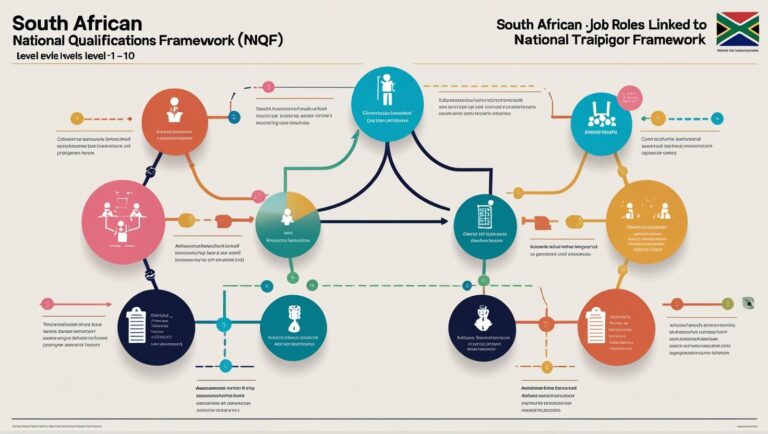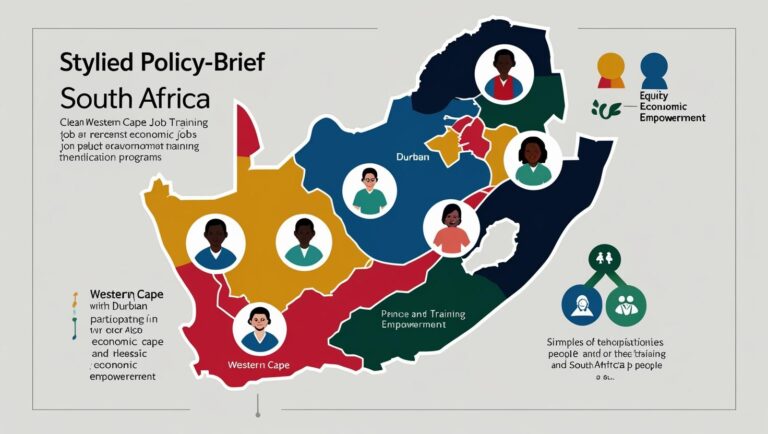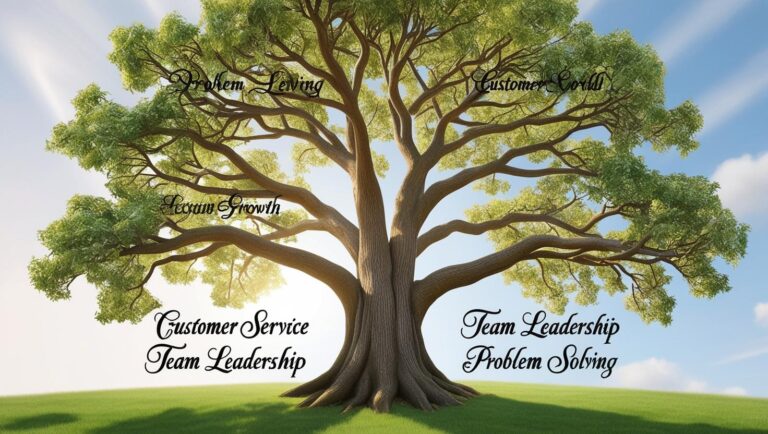Understanding the NQF Framework and Competencies Per Level
Introduction
South Africa’s workforce is evolving rapidly, and with it, the need for clarity around qualifications and competencies has never been more critical. The National Qualifications Framework (NQF) was designed to provide structure, quality assurance, and comparability across all forms of learning. Yet, despite its importance, many organisations still approach it as a bureaucratic checkbox rather than a strategic tool for workforce development.
For HR teams, Learning and Development (L&D) practitioners, and Skills Development Facilitators (SDFs), the NQF is more than a compliance requirement. It is a roadmap for designing jobs, planning training, and developing talent pipelines in a way that is measurable, progressive, and aligned with both organisational goals and regulatory frameworks.
This article explores the NQF in plain language, explains competencies at each level, and illustrates how to integrate the framework into practical HR and skills development initiatives. By the end, you’ll understand how the NQF can transform learning from a formality into a powerful lever for employee growth and organisational performance.
What Is the NQF, and Why Does It Matter?
The National Qualifications Framework is a 10-level system used to classify all South African qualifications, ranging from basic schooling to doctoral degrees. Managed by the South African Qualifications Authority (SAQA), the NQF provides a common language between employers, training providers, and learners, making it easier to understand what skills, knowledge, and competencies a person brings to the workplace.
The NQF is designed with multiple objectives in mind. It standardises and validates qualifications, recognises formal and non-formal learning, and enables mobility and progression across education and work. It also supports lifelong learning by clarifying pathways from entry-level roles to leadership positions. In essence, the NQF transforms training into measurable, transferable value that can be directly applied in the workplace.
Understanding the NQF is essential for HR and L&D teams because it allows them to align learning programs with actual job requirements, plan promotions and succession more effectively, and ensure employees develop the competencies they need to succeed.
NQF Levels Explained: Competencies Per Level
One of the most common misconceptions about the NQF is that it is purely academic. While qualifications are part of the framework, each level also represents competencies and skills relevant to the workplace. Understanding these levels is crucial for mapping learning, designing career paths, and implementing meaningful skills development programs.
Level 1: Basic Foundations
At NQF Level 1, learners demonstrate basic literacy, numeracy, and life orientation skills. This level corresponds to a General Education Certificate, typically at Grade 9. In practical terms, employees at this level can perform foundational tasks in a structured environment. This might include basic clerical duties, assisting on workshops or production lines, or completing entry-level administrative support functions.
Levels 2–3: Foundational Vocational Skills
Level 2 and 3 qualifications include National Certificates Vocational (NCV) or occupational certificates. At these levels, learners acquire foundational vocational skills suitable for workshop assistants, plant operators, and pre-apprenticeship positions. They can follow instructions, apply basic technical knowledge, and demonstrate readiness for further skill development.
Level 4: Matric / National Senior Certificate
Level 4 corresponds to the National Senior Certificate, or matric, and represents functional workplace literacy and communication skills. Employees at this level are often capable of carrying out administrative tasks, handling customer interactions, or supporting operations in a general assistant capacity. The focus here is on functional competence, problem-solving, and the ability to work independently within clearly defined parameters.
Level 5: Higher Certificate
At Level 5, learners acquire introductory technical skills and basic supervisory abilities. This level prepares employees for roles such as junior supervisors, HR or administrative support, and technical interns. Competencies include monitoring tasks, coordinating teams, and applying knowledge to moderately complex work situations.
Level 6: Diploma or Advanced Certificate
Level 6 builds applied competence in specialised roles. Employees at this level are capable of operating as team leaders, technical officers, or junior specialists. They can plan, analyse, and execute tasks with limited supervision, applying both technical and interpersonal skills to achieve operational objectives.
Level 7: Bachelor’s Degree / Advanced Diploma
At Level 7, learners develop strategic problem-solving abilities and can operate in entry-level management positions. They are often line managers, project coordinators, or educators. Competencies include critical thinking, decision-making under complex circumstances, and the ability to coordinate teams or projects with broader organisational impact.
Level 8: Honours / Postgraduate Diploma
Level 8 represents advanced competencies in analysis, research-informed decision-making, and cross-functional oversight. Senior managers, compliance officers, and policy developers operate at this level, using their knowledge to influence strategy, create policies, and provide guidance across teams or departments.
Level 9: Master’s Degree
Master’s-level employees demonstrate innovation, applied research capabilities, and leadership skills. Directors, strategic consultants, and business unit heads typically operate at this level, influencing organisational direction, designing new processes, and solving high-stakes problems.
Level 10: Doctoral Degree
Level 10 focuses on new knowledge creation, expert-level thought leadership, and complex research. Individuals at this level, such as industry experts, researchers, and executive advisors, drive innovation and contribute to the development of knowledge both within and beyond their organisations.
Practical Tip: Not all roles require the highest NQF levels. The key is matching competencies to job complexity, ensuring employees can perform effectively while also seeing a clear path for growth.
Why HR and L&D Should Care
The NQF is a powerful tool for workforce planning, but only if applied strategically. Here’s how HR teams can leverage it effectively:
Mapping Job Roles to Qualifications
By understanding NQF competencies, HR can avoid over- or under-skilling employees. This ensures that job descriptions accurately reflect required knowledge and capabilities. For internal promotions, linking roles to NQF-aligned learning allows employees to understand the skills they need to progress, creating fairness and transparency.
Designing Learnerships and Internship Pathways
Learnerships and internships can be mapped to NQF levels to ensure candidates develop skills appropriate to their current competence. The framework helps identify where bridging programs are needed versus where advanced placements are possible, improving both learner outcomes and organisational effectiveness.
Building a Culture of Progression
The NQF can guide employees in visualising their career path. By showing how certificates, diplomas, and degrees interconnect, organisations foster a culture where learning is purposeful and progression is tangible. This aligns with both skills development mandates and B-BBEE objectives.
NQF and Skills Development: Strategic Alignment
Skills development goes beyond compliance; it’s about intentional talent pipelines. The NQF provides structure to guide learning journeys and plan succession. Organisations can use it to define growth paths from entry-level to leadership, justify training investments for SETA reporting, and validate internal training through Recognition of Prior Learning (RPL).
Real-World Example: Customer Service Pathway
Consider a customer service department looking to develop talent internally:
A call centre agent at NQF Level 4 might complete a contact centre certificate and workplace coaching. Progression to team assistant (Level 5) could involve a higher certificate in business administration. Supervisors (Level 6) might enter a management development program, while contact centre managers (Level 7) pursue a BCom or advanced diploma in management.
This pathway not only clarifies growth for employees but also helps HR plan budgets, learnerships, and performance metrics aligned with development goals.
Making Your Workplace a Site of Learning
Workplaces offer the perfect environment for learning when aligned with the NQF. Accredited learnerships and internships can provide NQF-aligned credits, while RPL acknowledges the competencies of experienced staff. Modular and stackable learning enables employees to progress toward full qualifications without leaving their job.
Aligning job descriptions and performance documents with NQF levels creates clarity and fairness, helping employees understand expectations and opportunities for advancement. This approach supports both B-BBEE skills development objectives and long-term internal capacity building—a dual win for organisations.
Conclusion
The NQF is more than a set of regulatory requirements; it is a strategic framework for building competence, confidence, and credibility in the workforce. Understanding the practical meaning of each level allows HR and L&D teams to:
Design jobs that reflect real competencies
Guide employees along clear growth pathways
Strengthen SETA submissions and skills development scorecards
Deliver impactful training aligned to organisational and national priorities
Applied intentionally, the NQF transforms workforce development from a compliance exercise into a strategic tool that unlocks potential, drives performance, and enables inclusive growth across South Africa’s diverse economy. By embracing the NQF, organisations can turn learning into a measurable, meaningful journey, supporting employees at every stage of their career.



